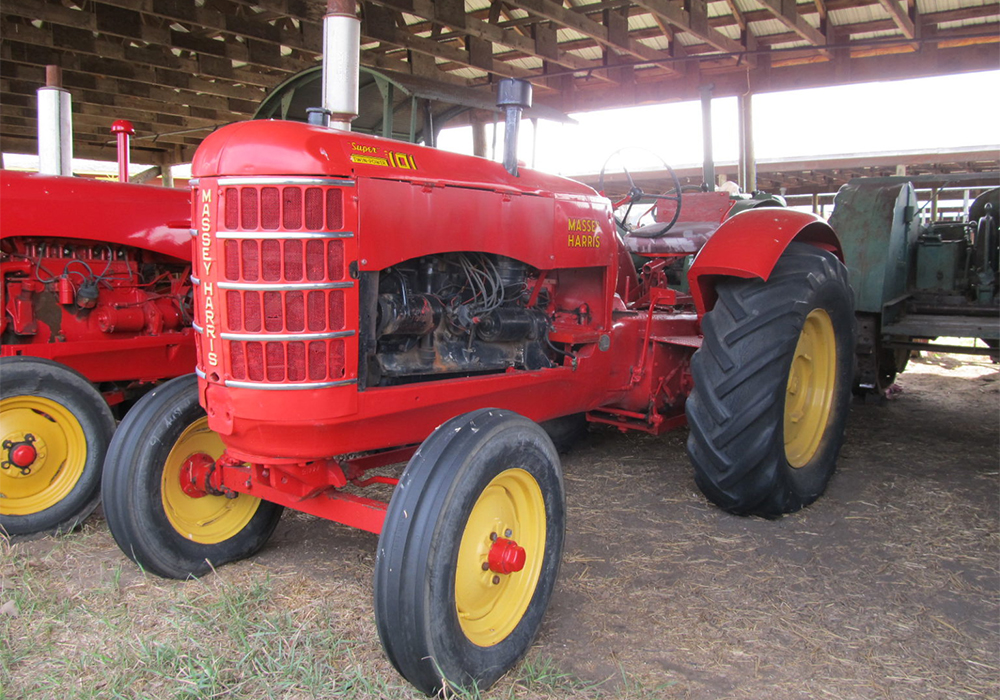The author’s father was always rounding up quirky makes and models of tractors, while many of the cars could be cranky
On the quarter-section farm where I grew up, we had an odd collection of cars and machinery that growled, roared, rumbled, whined or snorted across the land.
Some became exasperatingly silent, like the 1931 Studebaker that would seldom start on a Saturday night when I was excited to go shopping at the “big” town 20 kilometres away. I think that car considered itself a diva, who liked to be coaxed into performing. As an eight-year-old, I would wait impatiently in the backseat while Dad cranked and cranked, only to have the car sit in a sullen silence while my tears of disappointment spotted the velour seat.
Read Also

Using artificial intelligence in agriculture starts with the right data
Good data is critical as the agriculture sector increasingly adopts new AI technology to drive efficiency, sustainability and trust across all levels of the value chain.
The 1949 Austin that replaced it was not much better. Manufactured in England, it obviously detested our Canadian climate and refused to budge once the temperature dropped below freezing. Its stiff leather upholstery was not nearly as welcoming as the plush velour of the Studebaker’s, and in summer became hot and sticky on my bare legs. The only fascinating feature of the Austin was its turn signals, little flippers between the side windows that popped out on either side to indicate the driver’s intentions.
Compared to the box-like trunk that rode along on the Studebaker’s rear, the Austin was much more streamlined; its trunk concealed in its rounded back end.
I give that car credit for one thing. By the time I went to get my driver’s licence the day I turned 16, I had been driving unofficially for at least three years because the law seemed to turn a blind eye to kids helping out on the farm. The little old guy at the townhall asked what I was driving. When I told him a ’49 Austin, he said, “great, I’ve never seen one of those, so let’s go around the block.”
We did, and he handed me my licence, just like that. I still think experience trumps a test when it comes to driving.
Dad bought a Massey Harris Twin 101 tractor the month I was born, so I always felt a kinship with it.
As a youngster I liked its bright red colour. As a 13-year-old, I was turned loose on the nearest field with the Massey pulling a set of harrows. When I turned the first corner too short, the harrows started to climb the left fender.
Panicked, I stopped short and the harrows fell back down of their own accord. After that one scare, I rather enjoyed working in the field, the whine of the Massey far more soothing than the chug, chug, chug of the neighbour’s green tractor.
During the June when I was slated to write my final exams in high school, the timetable was so erratic and the roads so impassable with mud that I drove the tractor to school.
Come seeding and harvest, I drove the Massey down the back road to the local bulk dealer, where the dealer’s big teenage son would load the barrels of gasoline into the trailer for me before waving me off home.
In fall, I would help saw stove wood using the saw Dad mounted on the front of the Massey. Come winter, he used the tractor to skid logs out of the bush northwest of our house.
To supplement our meagre income, we had a small sawmill powered by an old Lawson tractor. I have no idea where Dad got it, but he was always rounding up quirky makes and models. The Lawson was the one tractor on the farm that could be relied upon to start spring and fall, the first sharp crack of its motor sending a hailstorm of feathers and twigs out of the exhaust pipe where the wrens had nested.
Dad installed a governor on the Lawson, and even in the house, we could tell when he was sawing an oak by the sound of the tractor.
As far as I know, the only time the Lawson moved was the day Dad drove it out on the back trail to do some breaking in a marshy area where another tractor would have bogged down. Its steel wheels with their triangular lugs gave it great traction.
Dad was an inventor of sorts and came up with an idea for a self-propelled swather years before they were on the market. By using the chassis of an old car turned backward, and mounting the workings of a binder on the front, he came up with a hybrid. What he couldn’t get used to was the fact that when the steering wheel was turned left, the conveyance went right — very confusing.
He drove the thing a few feet and then called me to take over. I soon got the hang of it, but reverting back to a normal vehicle took a few minutes of deliberate thought.
That year, there was a severe rust problem in the grain, and when I would come in from swathing and take off my glasses, I looked like a raccoon, the rust spores coating my face and turning the wash water brown.
I think dealing with all the idiosyncrasies of farm machinery early on in life made me more appreciative than most for modern cars and equipment that runs well.
When we bought a new car a few years ago, I was thinking back to those stubborn beasts that more often than not refused to start. When I turned the key in the newest model and the motor purred into action, I turned to the salesperson and said, “We’ll take it.”
It was probably the easiest sale he ever made.















